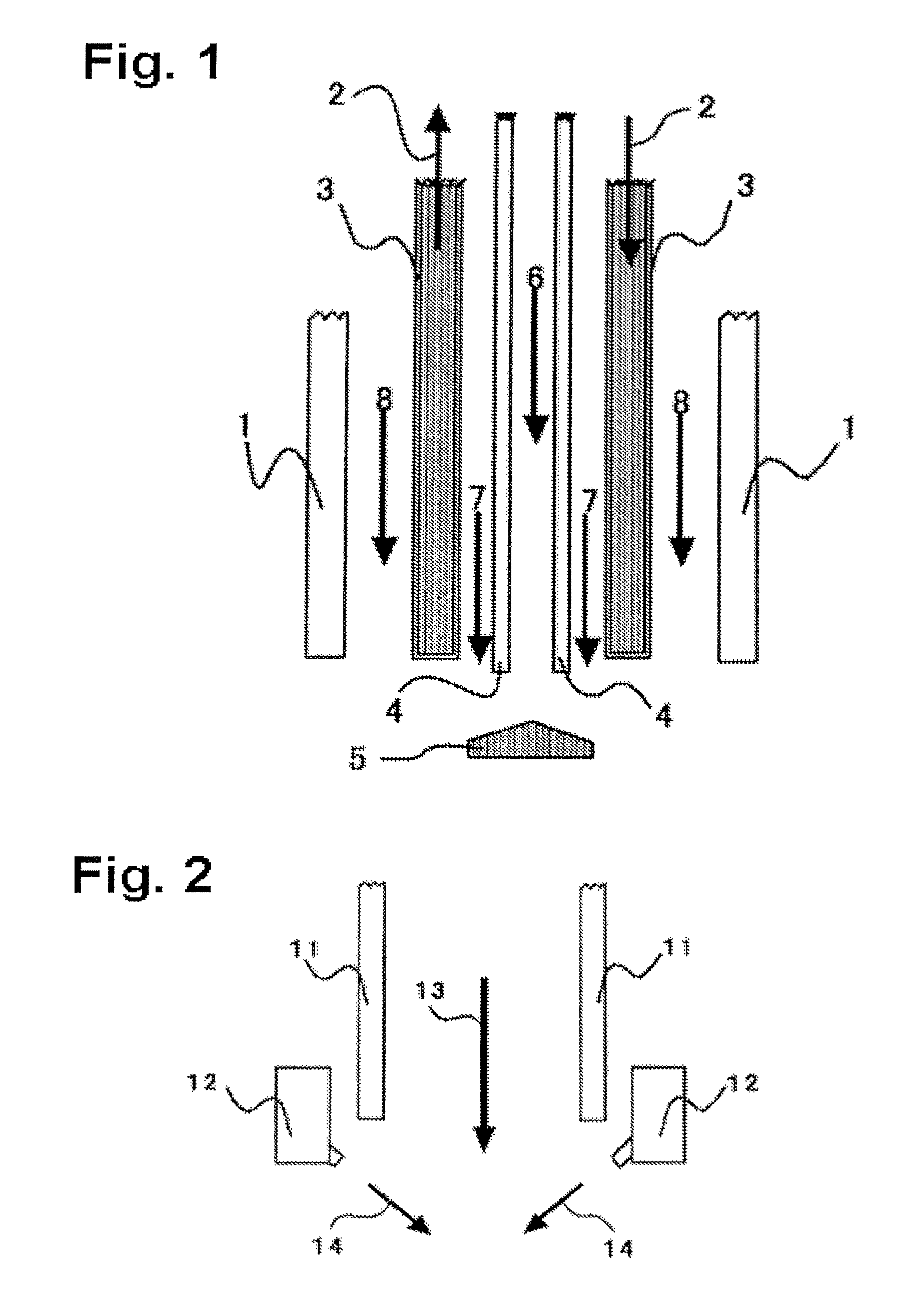Heat-expanded microspheres, production process thereof, heat-expandable microspheres and application thereof
a technology of expansion coefficient and expansion coefficient, which is applied in the direction of cellulosic plastic layered products, other chemical processes, natural mineral layered products, etc., can solve the problems of high probability of aggregated microcapsules at the end of the spraying, low expansion coefficient and shrinkage of hollow particulates, and non-uniform product production, etc., to prevent hardening and shrinkage of porous material composition, the effect of sufficiently lightening
- Summary
- Abstract
- Description
- Claims
- Application Information
AI Technical Summary
Benefits of technology
Problems solved by technology
Method used
Image
Examples
examples
[0174]The present invention is described specifically with the following examples and comparative examples, though the present invention is not restricted within the scope of those examples.
Determination Procedures and Definition
[0175][Determination of Average Particle Size and Particle Size Distribution]
[0176]A laser diffraction particle size analyzer (produced by SYMPATEC, HEROS & RODOS) was employed for the determination. Microspheres were analyzed in dry system with a dry dispersion unit, where a dispersion pressure was controlled at 5.0 bar and degree of vacuum was controlled at 5.0 mbar. The D50 value was determined as an average particle size.
[0177][Determination of True Specific Gravity]
[0178]The true specific gravity of microspheres was determined with the liquid substitution method (Archimedean method) with isopropyl alcohol at 25° C.
[0179][Determination of Ratio of Aggregated Microspheres]
[0180]The existence of aggregated microspheres was identified visually with electron...
example a1
[0202]Heat-expanded microspheres were produced by heating and expanding MATSUMOTO MICROSPHERE F-50 (produced by Matsumoto Yushi-Seiyaku Co., Ltd., comprising of nitrile copolymer as thermoplastic resin shell, and isobutane as a blowing agent, with the average particle size of 20 μm, and the coefficient of variation of 35%) with the production machine equipped with the expanding device shown in FIG. 1.
[0203]The expansion conditions were controlled into 0.1 kg / h for raw material feeding rate, 0.03 m3 / min for flow rate of gas containing dispersed raw material, 0.5 m3 / min for flow rate of hot gas, and 130° C. for hot gas temperature.
[0204]The resultant heat-expanded microspheres had an average particle size of 83 μm, a coefficient of variation of 36%, a true specific gravity of 0.031 g / cc, and the volume expansion coefficient of 71.5. Microspheres having a true specific gravity not lower than 0.79 g / cc at 25° C. were not found in the resultant heat-expanded microspheres. No residues rem...
example a2
[0207]Heat-expanded microspheres were produced in the same manner as in Example A1, except that the heat-expandable microspheres, MATSUMOTO MICROSPHERE F-50, were replaced with MATSUMOTO MICROSPHERE F-100 (produced by Matsumoto Yushi-Seiyaku Co., Ltd., comprising of nitrile copolymer as thermoplastic resin shell, and isopentane as a blowing agent, with the average particle size of 25 μm and the coefficient of variation of 37%), and that the hot gas temperature was controlled at 180° C.
[0208]The resultant heat-expanded microspheres had the average particle size of 97 μm, the coefficient of variation of 36%, the true specific gravity of 0.028 g / cc, and the cubic expansion coefficient of 58.4. Microspheres having a true specific gravity not lower than 0.79 g / cc at 25° C. were not found in the resultant heat-expanded microspheres. No residue was remained in the screening with the sieve of 200 μm sieve opening. No residue was remained in each of the screening with the sieve of 175 μm sie...
PUM
| Property | Measurement | Unit |
|---|---|---|
| particle size | aaaaa | aaaaa |
| melting point | aaaaa | aaaaa |
| particle size | aaaaa | aaaaa |
Abstract
Description
Claims
Application Information
 Login to View More
Login to View More - R&D
- Intellectual Property
- Life Sciences
- Materials
- Tech Scout
- Unparalleled Data Quality
- Higher Quality Content
- 60% Fewer Hallucinations
Browse by: Latest US Patents, China's latest patents, Technical Efficacy Thesaurus, Application Domain, Technology Topic, Popular Technical Reports.
© 2025 PatSnap. All rights reserved.Legal|Privacy policy|Modern Slavery Act Transparency Statement|Sitemap|About US| Contact US: help@patsnap.com


